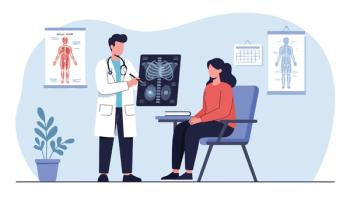
- Financial Assistance
- Volume 2
- Issue 1
Lending a Hand
Adolescents and young adults need not face cancer’s financial burden alone.
CANCER IS TERRIFYING AT any age. But now imagine coupling fears about the illness and its costs with pay-ing for college, starting a career or buying a first house. Patients in those situations may be about to start their life in debt before getting on their feet.
Each year more than 70,000 adolescents and young adults (AYAs) aged 15 through 39 years are diagnosed with cancer, the leading cause of disease-related death among this age group. As of 2012, more than 600,000 AYA patients and survivors were living in the United States.
Faced with unique challenges, AYAs can quickly find themselves in bankruptcy. Fortunately, a few organizations are dedicated to providing them with support, as well as educating the members of the medical community about the specific needs of AYA patients.A
UNIQUE POPULATION Understanding these challenges firsthand, Samantha Eisenstein Watson, 39, a cancer survivor, founded The Samfund in 2003 to provide financial support to AYA patients. For them, the biggest problem is not having enough money to pay their bills, according to Watson.
“That’s true for a lot of people going through cancer,” she says, “but what’s unique to young adults is that they don’t have a lot of financial stability to begin with.” Although that can be an issue for any patient at any time of life, it tends to affect AYAs more extensively and simultaneously.
For instance, a 2012 Livestrong study found that most AYAs with cancer needed to adjust their work life by tak-ing time off, switching to part-time hours or finding less demanding work or a more flexible schedule. Most returned to school or work within 35 months.
Medical insurance is another major concern. At 26, adult children are no longer covered by their parents’ plans. This group is at greatest risk of being uninsured. The Affordable Care Act helped remedy that situation, but many AYAs choose plans with low premiums. Then, when diagnosis strikes, they find themselves with high co-pays and deductibles that can make care inaccessible.
AYAs may have trouble keep-ing up with rent or mortgage payments, transportation to and from treatment, child care costs and follow-up screenings.
Psychosocial factors play a role, too. AYAs aren’t kids, but many don’t have the stability that comes with adulthood. They need special therapy and support groups designed to address emo-tions, self-esteem, body image, future plans, peer relations and health behaviors.
In addition, those who may want to have children face fertility issues. Because certain treatments can lead to infertility, most AYA patients may want to consider fertility preservation before treatment. For men, banking sperm can cost from $1,000 to $1,500, with annual storage fees ranging from $200 to $400. For women, the national average cost of embryo preservation is $12,400, with storage about $300 a year. Medical insurance may cover some methods but not those considered optional. THE HARSH
FINANCIAL REALITY For years, Kate Yglesias Houghton, 33, and her husband had saved every penny and finally bought their first house in February 2012. In March, she was diagnosed with acute myeloid leukemia. Cost of treatment: $450,000. Cost of the house: $405,000. “If I hadn’t had good insurance, we would have had to give up our house,” says Houghton, the presi-dent and CEO of Critical Mass: The Young Adult Cancer Alliance, a national advocacy organization.
Watson, a survivor of Ewing’s sarcoma, a type of bone cancer, and secondary myelodysplastic syndrome, nar-rowly avoided financial disaster when, at 23, she was billed $275,000 for a bone marrow transplant. Her mother quit her job and spent two years fighting the claim, which they ultimately won.
Similar stories are common in the AYA community, but many don’t have the positive outcomes. AYAs with cancer are more than $100,000 behind their peers in average net worth, according to 2007 to 2013 grant recipient data col-lected by The Samfund and compared with U.S. Census Bureau data. “The reality is that these are people who are struggling profoundly,” Watson says. “That $100,000 gap is hard to close for anybody, but especially if you’re in your 20s or 30s. It’s impossible.”
For some, it means bankruptcy. Researchers at the Fred Hutchinson Cancer Center in Seattle found that adults with cancer filed for bankruptcy 2.6 times more often than age-matched peers without cancer, and young patients with cancer filed at up to 5 times the rate of those diag-nosed at 65 or older.
Financial burdens are not helped by the fact that there’s no federal or state support for a “healthy” young adult who gets sick according to Houghton, but other steps can be taken. For example, because active cancer treatment is not currently considered a reason to defer student loan payments, The Samfund and Critical Mass partnered to introduce the Deferment for Active Cancer Treatment Act in the U.S. House of Representatives. If signed into law, this bill will allow patients with cancer to pause interest from accruing on loans while they seek lifesaving care.
The harsh reality for AYAs is not only financial but also health related. According to Damon Reed, M.D., who leads the AYA program at Moffitt Cancer Center in Florida, this group has not seen the improvement in cancer survival rates observed in older and younger patients. “What’s really shocking is that if you’re a 30-year-old and you have a can-cer that’s more common in 60-year-olds, you do worse than them,” Reed says. “The same holds true if you’re a 30-year-old and have a cancer that’s more common in 10-year-olds.”
Not much research focuses on this group and the fact that cancer “doesn’t just passively get better,” Reed says. The medical community is just beginning to realize that AYAs are a unique population and need their own treat-ment, resources and advocates.
WHO’S HERE TO HELP So, how can AYAs with cancer get much-needed help? Organizations across the country provide funds, while oth-ers offer grants to patients who have a particular diagnosis or receive a specific medication or treatment. Here’s a sam-pling of some of the bigger organizations.
Critical Mass: The Young Adult Cancer Alliance can be reached by calling 512-553-3556, emailing [email protected] or visiting criticalmass.org.
Family Reach, a national nonprofit organization, accepts applications on a rolling basis and offers grants to children, including adolescents. To learn more, email [email protected] or visit familyreach.org.
Hope for Young Adults with Cancer, another national nonprofit organization, offers financial assistance to patients and survivors between 18 and 40. To learn more, email [email protected] or visit hope4yawc.org.
Stupid Cancer offers opportunities for young survivors to meet one another, as well as resourc-es to help with financial assistance, insurance and fertility options. To learn more, email [email protected] or visit stupidcancer.org.
The Allyson Whitney Foundation offers Life Interrupted Grants for young patients with rare forms of cancer. They accept applications twice a year, and the average grant is $1,100 to $1,500. To learn more, email [email protected] or visit allysonwhitney.org.
The Samfund offers grants to AYAs with cancer. They have two appli-cation periods every year and give about 100 grants of, on average, $1,500 to $2,000 each. Reach the organization by calling 617-938-3484 or visiting thesamfund.org.
The Ulman Cancer Fund for Young Adults provides col-lege scholarships, making 36 awards of $2,500 each in 2016. The fund also takes a unique approach to helping AYAs. To tackle the housing problem, it acquired six row houses in East Baltimore near Johns Hopkins University and is build-ing a 12,000-square-foot facility with nine patient and fam-ily suites that can accommodate 300 people per year. To find out more, call 888-393- 3863, email [email protected] or visiting ulmanfund.org.
Many cancer centers nationwide also have developed AYA-focused facilities and services. For instance, Dana-Farber Cancer Institute in Boston created the Young Adult Program, which offers counseling and support services, an online community and an annual conference for young adults and their caregivers. Memorial Sloan Kettering Cancer Center in New York City provides The Lounge, a place for teens to hang out; a social media platform; and the Peer-2-Peer Network, a program that matches patients with teens who have completed treatment.
At the Moffitt Cancer Center, the AYA program includes psychoso-cial care, as well as donor funds set aside to provide free fertility preservation for male patients who qualify. “We never want a patient here to not have children in the future because of $300,” Reed says. Moffitt hopes to grow the program to help women with fertility preservation, too, but is limited now due to funding.
At MD Anderson Cancer Center in Texas, Cancer 180 supports patients between ages 18 and 30 with a special recreation area that includes a pool table and jukebox. The program also hosts social events such as bowling, pottery making and cooking classes.
The School Program at City of Hope in California helps young patients continue their education by coordinating tutors and home instruction, and assisting with school reentry, advocacy and community resources
Articles in this issue
almost 8 years ago
The 'Golden Key' to Financial Assistanceabout 8 years ago
Support Is There, If You Seek Itabout 8 years ago
Help Doesn't Cost a Thingabout 8 years ago
From War to an Even Bigger Battleabout 8 years ago
Organizations That Can Help You Rest Easierabout 8 years ago
A Home Away From Homeabout 8 years ago
Finding Help After Nearly Losing Hopeabout 8 years ago
A Chest of Charityabout 8 years ago
Financial Lifelines



